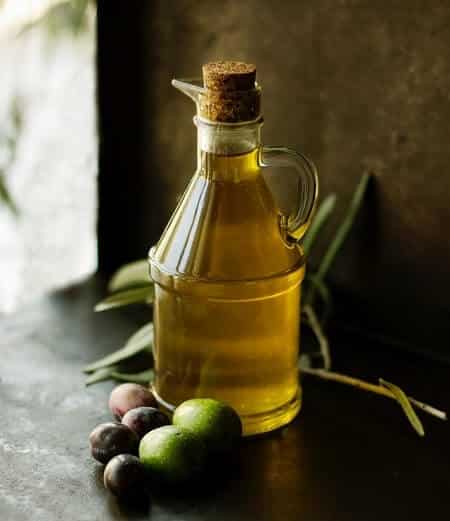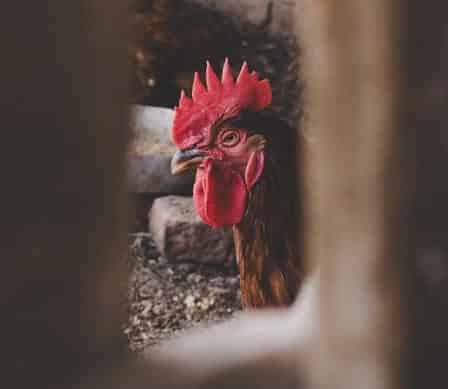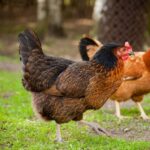Olive oil is one of my favorite condiments. It has loads of positive health benefits, tastes great (well at least I think so), and has some useful applications too!
There are actually a few really useful applications regarding the use of olive oil for chickens, which I want to cover in this article.
Here are 3 of the ways you can use olive oil within your flock. A couple are tips to help resolve health issues and one that’ll help produce even healthier and tastier eggs!
Table of Contents
Olive Oil Helps Hens Produce Healthier Eggs

It’s no secret that egg yolks contain cholesterol. Which when eaten in moderation and part of a balanced diet, doesn’t pose a problem to most people.
Eggs are a nutritious whole food, and the benefits of eating them far outweigh any negatives.
Still, there’s no harm in reducing the cholesterol content - and that’s exactly what some studies have been testing.
One study split 150 hens into three groups and fed them different diets. The interesting thing is that one group was given extra-virgin olive oil, while the other two were not.
The results were that the eggs laid by the hens given a diet consisting of high-polyphenols levels from the olive oil had a lower egg-yolk cholesterol level.
This could be beneficial for our health, and is seen as a “healthier” egg.
The concept of feeding chickens different things to affect the taste and nutritional value of their eggs is nothing new.
There is a noticeable difference between the taste of quality of an egg laid by a caged hen and one that is allowed to roam free and fed fresh, high protein foods and a quality commercial feed.
So, if you’re looking for ways to make your chicken’s eggs taste even better and even healthier, try incorporating a little olive oil into their diet.
Olive Oil Can Relieve Egg-Bound Hens

Having an egg-bound hen, also called “egg binding” means that a hen has an egg stuck somewhere in their oviduct.
In simple terms, she is unable to pass the egg all the way out for some reason!
As you can imagine, egg-binding is a serious problem. It’s often fatal if nothing is done to help the chicken.
Some of the common reasons why egg-binding occurs in chickens include:
- An oversized egg - if an egg is larger than their regular eggs not surprisingly it can get stuck
- An aging hen - older hens are more prone to becoming egg-bound as their muscles weaken
- Infection/health issue - there are a number of health-related issues that might be responsible
- Poor diet - a lack of minerals, vitamins, and other essential nutrients might be the cause
- Premature laying - if a hen is not mature enough then they might have difficulty laying
Symptoms of an Egg-Bound Chicken
There aren’t always symptoms present early on, at least not that you would be able to notice. So, don’t feel bad if you’re late to spot that your hen was egg-bound.
Symptoms that can be present include:
- Lack of appetite - if she is not eating and drinking it’s a sign that something is wrong
- Looks ill - we just know when one of your chickens are ill
- Squatting - it’s confusing for a chicken to have an egg stuck, they will squat a lot and be restless
How to Use Olive Oil to Help an Egg-Bound Chicken
If you’re sure you have an egg-bound hen on your hands, (you can check by gently feeling for an egg a couple of inches into her vent) I have found the following to be a good solution:
- Fill a bath with a few inches of warm water, enough for your hen to sit comfortably.
- Add some Epsom salts. About 1 cup per gallon of water should do.
- Either syringe some olive oil into her vent or rub some in with your finger.
- You can also gently massage her abdomen for a few minutes.
- Remove her from the bath and give her somewhere dark and quiet to lay her egg.
Speaking with other backyard chicken owners, this works most of the time. If the egg breaks inside her or she doesn’t lay her egg in the following hours, you should call an avian vet and seek their advice.
Olive Oil Can Resolve an Impacted Crop

The crop is basically a storage area located at the bottom of a chicken’s neck to the side of their breastbone.
When a chicken eats food (and anything else they can swallow!) it travels into their crop. When they’re ready to digest the food - typically overnight - the food will pass from the crop to their gizzard.
If for any reason, food cannot pass from the crop to their gizzard this causes an obvious problem. This is called an impacted crop, and unless treated will worsen and potentially be fatal.
Common Causes of an Impacted Crop
Any food or substances that cannot pass through from the crop to the gizzard will cause an impacted crop.
The most common foods that cause this are long grasses and other materials that are stringy. It could also be due to foreign objects, excessive amounts of foods that bloat like bread and pasta too.
Symptoms of an Impacted Crop
The main symptom of an impacted crop is a visible swelling on the front of a chicken. If you’ve been paying attention, you will have noticed a chicken's breast area swells during the day as they eat, and empties overnight.
If their crop is still full in the morning, you’ll be able to see and feel it.
You might also notice they’re not eating, are acting lethargic, and most owners just know when one of their flock is not feeling right.
How to Use Olive Oil to Fix an Impacted Crop
The process of using olive oil to help break up and move the blockage is simple.
All you need to do is get some olive oil (slightly warm is ideal) into the chicken’s crop. The easiest way to do this is by using a syringe to make sure it passes down their throat.
Once in the crop, you have two options depending on how serious the blockage is:
- Massage the blockage and give your chicken a chance to pass the food naturally, or
- Massage the blockage to break it up and turn your chicken upside down to vomit out the contents
For mild blockages, you should be able to massage the blockage and give them the help they need to pass the food through normally.
If the blockage is more serious, it’s better to just empty the crop to remove any risk of further complications.
If you’d like to see someone demonstrating the steps involved in massaging and helping a chicken throw up the contents of a blocked crop the video below will help:
Resources
Image credits - Photos by The Brewers, Roberta Sorge, Manuel T, and on Unsplash




